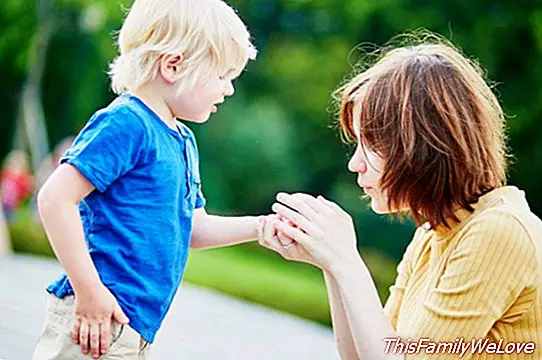Unintentional injuries, how to prevent them

Falls, bumps, rubbing against sharp surfaces. These are some examples of unintentional injuries. These suppose, according to data of the Spanish Association of Pediatrics, AEP, one in five consultations that reach health professionals dedicated to children. In fact, this age group is the most exposed to traumatisms, so it is necessary to educate in the prevention of these to prevent major problems.
To this end, the professionals of AEP have elaborated the Guide for parents on the prevention of unintentional injuries in children's age in order that the homes become a little safer for the little ones. Guidelines that seek to provide more security to families and reduce these accidents that can become a serious problem for children.
Falls
As indicated by AEP in this guide, falls are the most frequent injuries in children, although most of them are without serious consequences. They are present in all age groups, but younger children are the most likely not to fully master their motor apparatus. Pediatricians remember that most are avoidable following such simple guidelines as these:
- Use of protective handrails on stairs.
- Install security systems in windows and balconies-
- Place cribs, chairs and any surface where the baby is resting away from windows.
- Never leave the baby alone on surfaces such as changing tables.
- Do not resort to walkers.
- Avoid the child walking on wet floors, especially when learning to walk.
- During the first steps, remove objects that may cause falls such as carpets.
Burns
Unlike falls, burns have important consequences in children and is a frequent cause of death in children. Not only do they present seriousness immediately, they have important consequences in the future, from physical sequelae even aesthetic repercussions.
Keep in mind that the origin of burns may be in Different places of home. For this reason, it is necessary to have different safety guidelines to prevent them:
Electric burns:
- Place protective inserts on all plugs in the house.
- Do not manipulate wiring or plugs in front of children.
- Avoid, as far as possible, the use of extensions and thieves. These in any case should go after a piece of furniture
Sunburn:
- Take the child away from the sun at the most dangerous times, especially during the summer.
- Use protective creams throughout the body when visiting beaches or on days of special solar incidence.
Thermal burns:
- Remove children from cigarette butts, candles and any other object that emits a flame.
- No play with firecrackers or allow their manipulation to children.
- Supervise the activity of children in the kitchen and away from heat emitting places.
- Move the child seat away from these heat sources.
- Test the water before bathing the child to check if it is at the correct temperature.
Bites
Most of the bites in children they are caused by domestic animals, whether it is a pet of their own or that of a neighbor or acquaintance. Dogs are usually responsible for 60-95% of these lesions, followed by cats, 3-15%. Most of them are superficial and do not need medical attention, but if there are deeper wounds there is a greater probability of infection and complications.
These are some tips to prevent these situations:
- Do not choose pets with aggressive developed character. In any case it is recommended to talk with the head of the adoption center about what is the best option to bring the family and develop a good relationship with the children.
- Monitor the health of the pet, keep updated the vaccination and deworming calendar.
- In public places, the pet must be supported by a leash and wear a muzzle in case the regulations indicate it for their breed.
- Teach children that pets are not toys and that they should not disturb them, especially when they are eating, or wake them up from their dreams.
- Children should ask the owners if the pet is aggressive before approaching to caress it.
Strange bodies
All small object It is likely to cause harm to children. Either by inserting them in the nose, in the ear, or by ingesting them. Not all of them have the same risk; Batteries or batteries can seriously damage the surrounding tissue, seeds or bones can increase in size and worsen the obstruction.
AEP's advice for to prevent in this sense they are:
- Teach children to enter anything through holes such as the ear or nose.
- Do not allow children to access pieces of small size, either directly or because they get rid of one of their toys.
- Clean the house assiduously to avoid that during their explorations, young people meet these materials.
- Teach children to chew well.
- Remember that while playing or running, you should not eat.
Damián Montero




